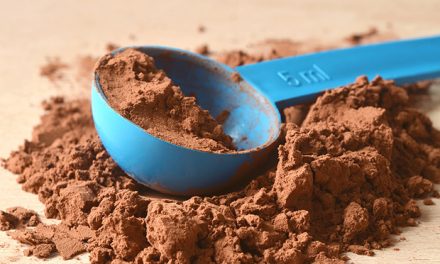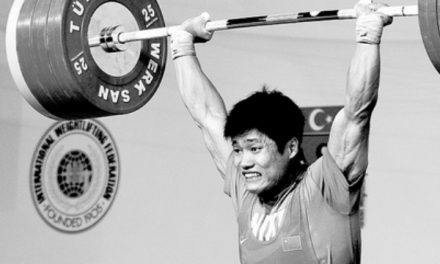by: Adam Sayih, CSCS

It seems simple enough: load the bar to a weight you never did before, attempt to perform the weight. Although it doesn’t seem like a complicated concept, knowing how to max out can be the difference between frustration or deserved happiness after busting your ass through a grueling cycle. When it comes to attempting a new one rep max there’s a few things we need to consider: technique refinement, weight selection, and energy management.
Technique Refinement
Several years ago I was preparing for a max during a mock meet at the gym. As I warmed up for the squats with the barbell, my coach stopped me and told me “What the hell are you doing?” Confused, I replied “…warming up?” Then he told me this gem that I’ll never forget, “your warm up is slow and lazy. Is that how you want your attempts to look? An elite lifter’s warm up looks just like their maxes, fast and explosive.” He was absolutely correct. As the years went by and I competed more, I became more aware of what was going on in the warm-up area. The people that looked lazy in the warm-up area tended to miss their lifts and the guys that looked sharp and explosive nailed every attempt.
Warming up isn’t just about getting the muscles ready, it’s getting your technique ready as well. You simply can’t disregard the competition lifts as skilled movements, warming up is similar to practice. Do basketball players warm-up by purposely throwing air balls or bad passes? No, they prime their technique for the game. This is the mentality you need to have in the warm-up room.
Weight Selection
Weight selection is a very very tricky component of maxing out. Next Monday (Because everyone knows that’s National Bench Press Day), watch the warm up attempts everyone makes. Ninety percent of the time it goes like this: Couple shoulder circles, straight to 135lbs. Now does that mean 135lbs is a bad warm-up selection? Of course not, but that’s what almost everyone does, regardless of how much they bench. Recently, I was asked to spot a fella who was benching 155lbs. I noticed he did one warm-up set beforehand, you guessed it, at 135lbs. So technically, he went from completely cold to 87% of his max to a new max attempt. Not very wise.
What weights you decide to warm up with will be become more individualized as you improve and gain experience, but here’s a general guide I made influenced by several different 1rm testing protocols. Also note that this does not include a general warm-up which will be specific to you.
Set 1- Just barbell 10 reps
Set 2- 50-60% of current 1rm, 5 reps
Set 3- 70%-75% of current 1rm, 3-5 reps
Set 4- 75%-85% of current 1rm, 3 reps
Set 5- 90-92.5% of current 1rm, 1 rep
Set 6- 102.5%-105% of current 1rm, 1 rep max attempt
Note that someone who is lifting at near elite level numbers will probably require more singles/doubles closer to their one-rep max since 10% will be a more significant jump. Also, the range is all dependent on how the previous warm-up set felt. If it felt heavy, you’ll be more on the bottom end of the range. If it felt light and easy you’ll be on the higher end of the range. Lower body exercises (squat/deadlift) will be bigger jumps than upper body exercises (overhead press, bench press).

Energy Management
Believe it or not, most people will blow their max attempt simply because they burnt themselves out warming up. The other day, someone in one of my classes missed a 5lb max attempt after we did a 6-week squat cycle. I asked him what weight he attempted before he tried this new max. He told me his previous set was his current one rep max! There’s simply no reason to waste energy on a weight you know you can do. Your current max is obviously a weight you can do, but is not an ideal number to use for warm ups. Think about it, if you’re attempting to do 5-10 more than your current max, you just did a warm-up at 98%ish of your one rep max. That is extremely taxing. The energy you used warming up with your previous max could have been used for your one-rep max attempt.
Timing between sets is also very important. The initial sets should have a 1-2 minute rest between sets to help get some blood flowing and loosen you up a bit. Once we pass the 80% mark, we need to rest a bit longer between sets, roughly 3 minutes, to make sure we aren’t completing exhausting our phosphagen creatine system (ATP-Pc), our main energy contributor for 1-rep maxes. This is also why running a mile as a warm-up would be a dumb idea. Your warm-up should match the metabolic system you’re about to partake in.
If you miss an attempt or want to add more weight, you need to give yourself enough time to recover between attempts. Three to five minutes will be ample time to replenish creatine stores since you pretty much drained all of it grinding out a lift.
Miscellaneous Warm-up tips
- When approaching a meet, warm-up with the same weights you plan on using to warm-up the day of the meet. Some Russian weightlifters plan their warm-ups over a year in advance so that the day they compete, their body knows exactly what to expect.
- Don’t change your technique. This is not the time to be changing anything. Max out at what you’ve mastered.
- Communicate with your coach, training partner, etc. Some people like to be yelled at to get hyped up, some like to find zen. Everyone has their own mental game, this needs to be practiced as well. Maxing out is very strategic but all of this can go to crap if you have a weak mindset.
- Have a ritual. Watch some clips of the best lifters in the world. They do the same ritual before every lift. This applies to all sports as well, for example Rafael Nadal touches his ear, nose, other ear, nose before every serve, and Jon North yells his old coach’s name “Shankle!” before pretty much every lift. A ritual brings you comfort and focus.
- Be aware of how much time you have. If you’re at a gym, don’t rush a max out. This can lead to serious injury that can put you out of the gym for a long time. If you’re at a meet, make sure you plan out how much time before you’re on. An experienced coach can help you with this. If you warm up too soon, you’ll be sitting around for awhile and cool down, get out of your “zone,” or burn out by trying to maintain that ready-state. If you warm up too late, you probably won’t be ready for such a heavy load.
Maxing out is equal parts body preparation and mental warfare. I taught you how to prepare your body, now it’s up to you to engage in mental warfare with the barbell and conquer your goals.
Cheers,
Adam
Stay connected!
Here’s how to follow us:
Instagram: @GentlemanAndMeathead
Facebook: Facebook.com/GentlemanAndMeathead
Twitter: @ClassyMeathead
Sources:
Baechle, Thomas R., and Roger W. Earle. Essentials of Strength Training and Conditioning. Champaign, IL: Human Kinetics, 2008. Print. Page 396








